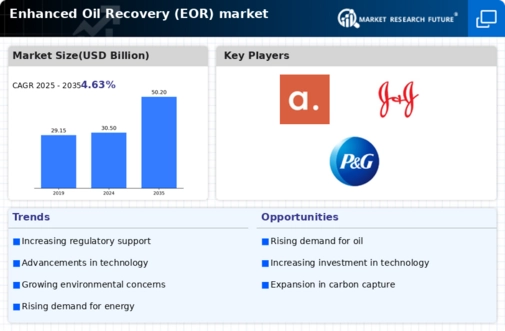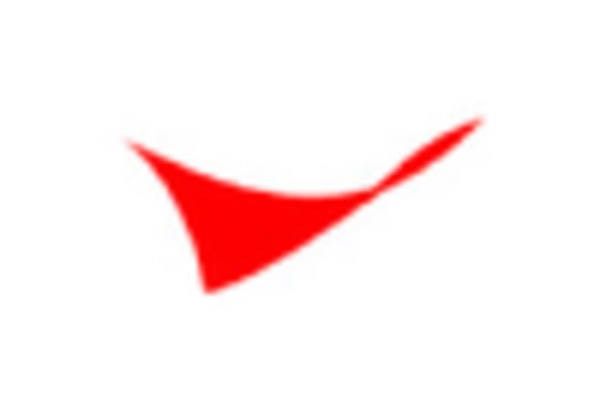The enhanced oil-recovery market is currently characterized by a dynamic competitive landscape, driven by technological advancements and a growing emphasis on sustainability. Major players such as Schlumberger (US), Halliburton (US), and Occidental Petroleum (US) are actively pursuing strategies that leverage innovation and digital transformation to enhance operational efficiency. Schlumberger (US), for instance, has focused on integrating advanced data analytics into its operations, which appears to optimize recovery rates and reduce costs. Meanwhile, Halliburton (US) has been investing in partnerships with tech firms to develop AI-driven solutions that streamline processes and improve decision-making capabilities. These strategic initiatives collectively shape a competitive environment that is increasingly reliant on technological prowess and operational excellence.
In terms of business tactics, companies are localizing manufacturing and optimizing supply chains to enhance responsiveness to market demands. The market structure is moderately fragmented, with a mix of large multinational corporations and smaller specialized firms. This fragmentation allows for a diverse range of offerings, yet the collective influence of key players like Chevron (US) and Baker Hughes (US) remains substantial, as they continue to set industry standards and drive innovation.
In October 2025, Occidental Petroleum (US) announced a significant investment in carbon capture technology, aiming to enhance its enhanced oil-recovery processes while simultaneously addressing environmental concerns. This move is strategically important as it positions the company at the forefront of the sustainability trend, potentially attracting environmentally conscious investors and clients. The integration of carbon capture not only enhances recovery rates but also aligns with global efforts to reduce carbon emissions, thereby enhancing Occidental's market appeal.
In September 2025, Halliburton (US) launched a new suite of digital tools designed to optimize drilling operations. This initiative reflects a broader trend towards digitalization within the industry, as companies seek to harness data for improved operational insights. The strategic importance of this launch lies in its potential to significantly reduce operational downtime and enhance recovery efficiency, thereby providing Halliburton with a competitive edge in a rapidly evolving market.
In November 2025, Chevron (US) entered into a strategic partnership with a leading technology firm to develop next-generation enhanced oil-recovery techniques. This collaboration is indicative of a growing trend where traditional oil companies are increasingly aligning with tech innovators to drive efficiency and sustainability. The strategic importance of such partnerships cannot be overstated, as they enable companies to leverage cutting-edge technologies that can redefine recovery processes and enhance overall productivity.
As of November 2025, the competitive trends within the enhanced oil-recovery market are increasingly defined by digitalization, sustainability, and the integration of AI technologies. Strategic alliances are shaping the landscape, allowing companies to pool resources and expertise to tackle complex challenges. Looking ahead, competitive differentiation is likely to evolve from traditional price-based competition towards a focus on innovation, technological advancement, and supply chain reliability. This shift underscores the necessity for companies to adapt and innovate continuously in order to maintain a competitive edge in a rapidly changing market.

















Leave a Comment